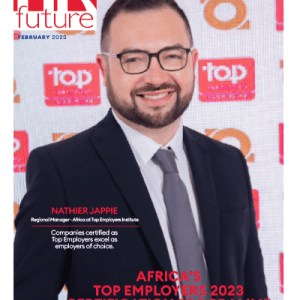The 2022 edition of the 10X Retirement Reality Report shows little, if any, long-term improvement in the pension prospects of South Africans. Even among those who do have some sort of savings plan, 74% of respondents worry about having enough money, or are unsure. These levels are largely unchanged since 2018.
This high degree of concern is evident across all income brackets. Just 8% are not worried at all, significantly fewer than the 13% first reported in 2018. For almost everyone else, retirement looms as a threat rather than a blessing.
RRR22 is based on replies to the Brand Atlas survey, which tracks the lifestyles of the 15,4 million economically active South Africans (currently those living in households with a monthly income of more than R6,000 pm, with internet access, who are 16 years or older).
One bright spot in this year’s survey is the trend reversal in the percentage of people not providing for retirement at all. This had deteriorated steadily since 2018, from 41% to 50% last year, but has now reverted to the 2019 level of 46%.
Despite the improvement, that percentage is still way too high. Almost half the working population is not making any retirement provision. These numbers echo National Treasury’s own estimates, that only half the country’s workers belong to a retirement fund. According to its 2021 discussion paper, Encouraging South Africans to save more for retirement, only around 6.8 million individuals contribute to retirement funds, based on SARS data from 2018.
Treasury intends to address this by “introducing an auto-enrolment or mandatory system of retirement saving for all employed and self-employed persons, to widen and deepen coverage”.
The paper touches on one of the underlying issues, the significant categories of workers who don’t have access to a corporate scheme, or a union fund. Partly, that’s because employers are not obliged to set up a retirement fund unless required by Sectoral Determinations, Bargaining Council Agreements, or as a condition of employment. Some employee categories are also excluded by fund rules, for example those who don’t belong to a labour union, who work on contract or have a temporary position. Others are self-employed or operate in the gig economy.
Getting everyone in formal employment to join a retirement fund is a quick fix; such schemes are easily facilitated for salaried or wage-based employees, who can make regular and fixed contributions, with an employer who can administer the deduction and tax relief via the payroll.
That, though, underlines the complexities involved in accommodating other groups of workers, who earn below the tax threshold (the great majority), or who work for small companies, or who have sporadic or tenuous employment, for instance in construction, agriculture, or domestic service.
Workers are, of course, free to make their own retirement provision, by contributing to RA (a retirement fund for individuals). For small companies, the group RA has become a viable option, now that the access rules are harmonised across all types of retirement funds.
Access issues apart, there is the economic reality that many simply cannot afford to save because there is just no money left at the end of month. Per RRR22, their numbers are growing alarmingly: 70% of the respondents without any sort of a retirement plan indicate this, up from 64% last year, and 56% the year before.
The absence of any kind of retirement plan is strongly correlated to income: 58% of respondents with a monthly household income below R20k report this, 30% in the middle-income bracket and ‘just’ 16% for those earning above R50k.
For some it is not about affordability, though, but a lack of conscientiousness, or awareness, or simply inertia. Those are good grounds to make it compulsory.
There are also the 16% of RRR22 respondents who don’t save because they don’t plan to stop working. 88% of these are in the low-income bracket, earning less than R20k. That is an unlikely prospect for anyone, but especially for low-income workers who tend to hold jobs that prize vigour over experience and expertise.
Another 20% indicate that this is not a priority at this stage of their life, an attitude that is most widely held among under-25s, yet evident across all age brackets. This is a great pity as starting late denies savers the benefit of long-term compound returns.
It is unlikely that financial education will change the outlook of these refuseniks; the best thing for them might be a mandatory retirement savings system. Treasury’s original retirement reform proposals aimed to “nudge, rather than force, individuals into making decisions which serve their long-run interests”, but this hasn’t worked, which is why it is now looking at legislating desired behaviour. It cannot be any other way. If Treasury’s retirement reforms aim to strengthen retirement savings for all, they cannot exclude the millions of employees who are presently outside the system.
The content herein is provided as general information. It is not intended as nor does it constitute financial, tax, legal, investment, or other advice. 10X Investments is an authorised FSP (number 28250)
Jonathan Sierra is a Product Specialist: Employee Benefits at 10X Investments.








